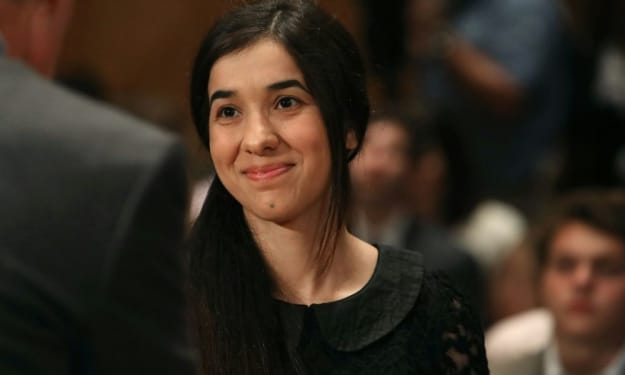Kris Kringle
The Enigmatic Yuletide Wanderer

The Enigma of Kris Kringle
As the holiday season approaches, Kris Kringle often appears in festive tales and traditions. But who is Kris Kringle? Commonly mistaken for another Santa Claus name, Kris Kringle's origins and identity are rich in cultural history and significance. Discover how Kris Kringle evolved from a traditional German 'Christkindl' to the beloved figure in modern Christmas lore. Through Kris Kringle's historical and cultural journey, I hope to shed some light on how this character symbolizes Christmas. This figure symbolizes the spirit of giving and joy throughout the world.
A Linguistic and Cultural Exploration
The journey of the name 'Kris Kringle' from its roots to its modern usage is a fascinating exploration of linguistic evolution and cultural adaptation. The name originates from the German term 'Christkindl', which translates to 'Christ Child'. It was initially associated with a religious figure representing Jesus. In Germanic Christmas traditions, the Christkindl was revered as a divine giver, a tradition steeped in Christian lore and deeply embedded in German-speaking cultural fabric.
As German immigrants settled in various parts of the world, particularly in the United States, they brought with them their customs, traditions, and language. In this evolving linguistic landscape, 'Christkindl' underwent a subtle transformation. The term, when pronounced by English speakers, naturally evolved into a form that was more phonetically comfortable in the English language, gradually morphing into 'Kris Kringle'.
This linguistic shift was more than a mere pronunciation change; it represented a broader cultural transition. As the term 'Kris Kringle' became more prevalent in American English, it lost its original religious connotations. It took on its own identity in American culture. Kris Kringle was identified with the burgeoning Santa Claus mythology, a figure already undergoing its own evolution. This figure was influenced by various European traditions such as Dutch 'Sinterklaas' and British 'Father Christmas'.
The evolution of 'Kris Kringle' is emblematic of the immigrant experience – a blending and adaptation of old-world traditions into new-world culture. This process of cultural assimilation was further accelerated by the media and popular culture, where the name Kris Kringle became a staple in Christmas stories, songs, and films. These portrayals often depicted Kris Kringle as a jolly, benevolent character, synonymous with Christmas spirit, cementing his place in American holiday folklore.
In tracing the name 'Kris Kringle', we uncover a story of international intermingling and adaptation. It’s a narrative that highlights language fluidity and cultural symbols' capacity to transcend their original contexts. The transformation of 'Christkindl' to 'Kris Kringle' is a testament to the dynamic nature of cultural traditions. It is a testament to their evolution and adaptation to changing societal landscapes. It underscores how a term rooted in specific religious and historical origins can be reshaped into a universally recognized symbol of the holiday season. This symbol is beloved by people of various backgrounds and traditions.
From Christkindl to Kris Kringle
The transformation from 'Christkindl' to 'Kris Kringle' is a captivating narrative that showcases the dynamic interplay between cultural traditions, linguistic evolution, and societal changes. Originally, 'Christkindl', a German term meaning 'Christ Child', referred to the religious figure of the infant Jesus. This figure was believed to bring gifts to children during Christmas. This depiction was deeply rooted in the Christian traditions of Germany and other parts of Europe. The Christkindl was revered as a symbol of purity, innocence, and Christmas spirit.
As German immigrants settled in the United States, they brought customs and traditions, including Christkindl. However, in the melting pot of American culture, 'Christkindl' pronunciation and understanding gradually evolved. Linguistic adaptation played a key role in this transformation. The German term, when pronounced in English-speaking environments, sounds more like 'Kris Kringle'. This phonetic shift was a critical step in the journey of Christkindl from a religious icon to a more secular and broadly appealing figure.
The Americanization of Kris Kringle also coincided with the emerging popularity of Santa Claus, a character largely derived from the Dutch 'Sinterklaas' and the British 'Father Christmas'. In the cultural milieu of the United States, these figures merging, with Kris Kringle and Santa Claus often becoming interchangeable in the public consciousness. This amalgamation was further influenced by authors and cartoonists, most notably Clement Clarke Moore’s poem "A Visit from St. Nicholas" and Thomas Nast’s illustrations, which solidified the modern image of Santa Claus.
This transition from Christkindl to Kris Kringle reflects broader changes in Christmas celebrations, especially in the United States. The holiday shed its strictly religious overtones, transforming into a more inclusive, secular celebration that emphasizes universal values of joy, family, and generosity. Kris Kringle, as a symbol of this evolution, embodied the spirit of Christmas in a way that resonated across diverse cultural and religious backgrounds.
The story of Christkindl's transformation into Kris Kringle is not just a tale of linguistic adaptation but also a narrative of linguistic assimilation and evolution. It illustrates how traditions can be reshaped and reinterpreted to fit changing social and cultural contexts, creating familiar and new symbols. Kris Kringle, in his modern incarnation, stands as a testament to the enduring power of cultural narratives to bridge gaps between the old and the new. This is the sacred and the secular, the traditional and the contemporary.
Kris Kringle in Folklore and Popular Culture
The character of Kris Kringle has been a vibrant and enduring presence in folklore and popular culture. He has shaped Christmas traditions and perceptions through various forms of media and storytelling. His portrayal in folklore is deeply rooted in Germanic and European cultures. He initially emerged as a representation of Christkindl, embodying the spirit of Christmas in a manner that intertwined religious reverence with festive celebration.
In folklore, Kris Kringle is often depicted as a benevolent and mystical figure, bringing gifts and joy to children. He is a character steeped in the magic of the season, embodying the anticipation and wonder that define Christmas for many. In these stories, Kris Kringle traverses snowy landscapes, interacts with forest animals, and engages with elves and other mythical beings. This emphasizes his connection to the natural and supernatural worlds.
As Kris Kringle transitioned into popular culture, particularly in the United States, his character expanded and evolved. He absorbed elements of Santa Claus and other holiday figures. He became a central character in Christmas-themed literature, films, and television shows. In these portrayals, Kris Kringle often embodies the quintessential Christmas spirit - generosity, joy, and belief. Classic films and books have portrayed him as the jolly, red-suited Santa Claus, while others have taken creative liberties, presenting him in various guises, from a guardian of Christmas traditions to a symbol of resistance to commercialization.
Kris Kringle's presence in popular culture extends beyond entertainment; he has become a symbol in advertising and marketing, representing the spirit of gift-giving and the festive season. This commercial aspect, while a departure from his traditional folklore roots, reflects his broad appeal and ability to adapt to contemporary cultural contexts.
Moreover, Kris Kringle's influence is evident in Christmas celebrations around the world. He has become a part of community traditions, parades, and festivals, embodying the communal spirit of the season. From Christmas tree lighting to gift exchange, his influence permeates various aspects of holiday celebrations. This shapes how Christmas is experienced and enjoyed.
In summary, Kris Kringle's journey through folklore and popular culture highlights his versatility and enduring appeal. He has successfully bridged the gap between traditional folklore and modern media. He is continuously evolving while retaining the core attributes that make him a beloved figure in the Christmas season. His portrayal in popular culture not only reflects changing times and societal values. It also serves as a testament to myth and tradition's enduring power in shaping cultural celebrations and collective consciousness.
Kris Kringle: A Thousand Faces
The persona of Kris Kringle is a remarkable tapestry woven from a multitude of cultural threads, each adding its own hue and texture to this beloved character. Kris Kringle embodies the traditions, beliefs, and narratives of numerous societies, making him a figure of a thousand faces. This richly varied identity reflects the diverse ways Christmas is celebrated around the world.
In Germanic lore, Kris Kringle originated as 'Christkindl', a serene, angelic figure representing the Christ Child. This figure embodies purity, religious devotion, and Christmas' sacred essence. However, as German immigrants settled in the United States, 'Christkindl' gradually transformed into 'Kris Kringle', intertwining with Santa Claus' mythology. This Americanized Kris Kringle took on a more secular, robust, and jolly persona, synonymous with the spirit of holiday cheer and the anticipation of gift-giving.
Beyond these Western interpretations, Kris Kringle resonates with similar characters across various cultures. In the Netherlands, Sinterklaas, a stately figure based on Saint Nicholas, rides a white horse and brings gifts to children, embodying generosity and kindness. In Russia, Ded Moroz, or Father Frost, travels with his granddaughter Snegurochka, delivering presents. This symbolizes the harshness and beauty of winter. Even further afield, figures like Japan's Hoteiosho, a Buddhist monk bearing gifts, or Italy's La Befana, a kind-hearted witch who fills children's stockings, echo Kris Kringle's multifaceted nature.
Each of these characters, while distinct in their cultural origins and narratives, shares common threads with Kris Kringle. They represent the universal human longing for joy, generosity, and wonder during the festive season. Kris Kringle's myriad faces are a testament to cultural myths' adaptability and their power to transcend geographical and temporal boundaries. They encapsulate the spirit of giving, the warmth of community, and the magic that pervades the holiday season. This makes Kris Kringle not just a character, but a symbol of kindness and goodwill.
This diverse portrayal of Kris Kringle reminds us of the rich tapestry of human culture and shared narratives. In Kris Kringle, we find a mosaic of humanity's finest virtues, celebrated and reimagined in a thousand different ways across the globe. However, they are united in the universal joy of the Christmas spirit.
The Continuing Legacy of Kris Kringle
Kris Kringle's story is a vibrant narrative of cultural adaptation and enduring appeal. This section reflects on Kris Kringle's significance in contemporary Christmas celebrations. It considers the role he plays in modern festivities and the broader holiday tradition. Kris Kringle rich historical and cultural lineage, continues to capture imaginations and inspire the essence of the holiday season.
Discover more insightful reading and expand your knowledge by exploring our related articles – each offers a unique perspective and in-depth information on a range of fascinating topics. Click here to continue your journey of discovery!
Please tell me the truth, is there a Santa Claus?
What Miracles Define the Legacy of Saint Nicholas?
Who Is Santa Claus, and Where Does He Come From?
About the Creator
Festive Fusion Finds
My insatiable curiosity about the world we live in and passion for uncovering its history and traditions drive me to explore the world we live in. I enjoy wandering through the pages of time, exploring how our world has been shaped by them.






Comments
There are no comments for this story
Be the first to respond and start the conversation.